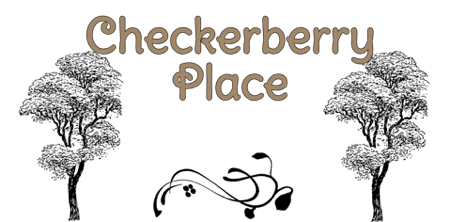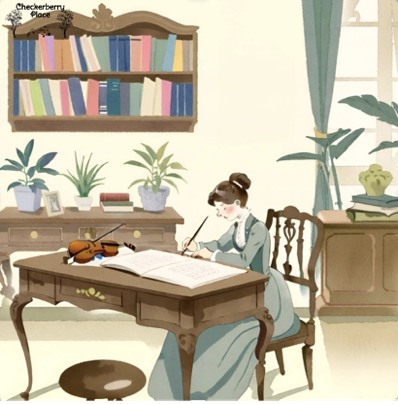01/17/2025
I’ll fully admit that I am rather disparaging of modern contra dances. This is perhaps why I cringe when I see dancers encourage clapping on the turn in “Petronella”, or callers calling it with all couples active. I don't hold a grudge, but I don’t see the necessity of it. Perhaps this is my problem (having only been in this community for about 2 years) but I am a traditionalist at heart.
However, as I was at Ralph Page Legacy weekend in Worcester last weekend, I observed a few things I wanted to comment on as my first blog post (hopefully that will become more regular, about two a month) of 2025. So, here we go.
Low attendance this year at RPLW. At least comparatively to what I saw last year as well as what I observe on videos of previous years. Winter weather, sickness, travel concerns… Those all probably contributed to this low ebb. Hopefully that doesn’t last. However this is not what I am here to talk about as I have talked about at length about the lack of younger dancers.
What I am here to talk about is the flatlining of creativity within the dance community. Very few people dance with any sort of personal style that suits their way of dancing. There are a few, and the rest do dance differently than each other, however there is very little wiggle-room in terms of how people do the movements. Take balances, for example. From what I have heard, there used to be quite a few people that played around with how they balanced. The New England way of dancing seems to be disappearing in favor of a wider, more nationwide, dare I say bland version. Rather like our disappearing state and regionally dependent accents due to the presence of TV/radio.
When did we decide that everyone should dance the same? In the past, I have been informed rather haughtily by some dancers that I balance wrong, since I use my New Hampshire step swing in most cases. In some instances it is easier for me to use a forward and back (the dueling balance, as Dudley Laufman cynically terms it), because my partner is so insistent on shoving me away and then pulling me back. I’m about to start using a Boston Stomp just so people slow down a little.
I imagine most of this is because the modern generations, starting with the ones born in the 60s, were very seldom taught to dance properly. I could be wrong, and forgive me if I am, but this is what I have gathered from talking to people. By that time, being taught or socially adapting to being able to dance things like swing, two-steps, or sociable waltzing were out of vogue. This has only fallen further into disrepair the younger the generations get. By the time you get to my generation, Gen Z, frankly, we have no idea how to socially dance. We are very disconnected to our bodies (thanks, modern technology + Covid-19), and thus have no idea how to interact with each other on a respectful dance basis. There is a difference between dancing, such as witnessed on TikTok and most social media platforms and in clubs nowadays, I imagine, and socially dancing on a respectful basis with people of all ages or even people our own age. It requires a different awareness and proprioception.
However, even within the established contra dance community, there is almost a distaste for the older dances, such as Moneymusk, Petronella, Hull's Victory, Darling Nelly Grey… the list goes on. Dances that were frequently found on dance programmes as late as the 1950s- 60s. Why is there such a distaste, such a rolling of eyes and complaining about dances that are either, depending on the person, considered too hard or too easy? What is wrong with doing a square like Darling Nelly Grey or Crooked Stovepipe within the course of an evening? It would add some zest into a dance. I would argue that dances that are all in the same vein as Charismatic Megafauna don’t make for a very varied evening.
Is simple so bad? Would it bore so many dancers to do a Virginia reel, where, heaven forbid, you are inactive at times? Those aren’t just dances for kids. Yet, somehow, there is a pushback and I have yet to find a reasonable answer as to why those older dances aren’t done at most modern contra dances. They aren’t just called indiscriminately. If the aim of contra dancing is to have fun, then why do modern dancers seem to require more and more difficult and fast dances? Those have their time and place in an evening, but they should not make up the bulk. What happened to having a Gay Gordons, Polka, or schottishe in an evening to break up the dances? The Nelson dance does some of those, as well as a few other select dances. However, I have very seldom seen a dance at Peterboro Town Hall, for example, that included these, other than those called by Tod Wittemore and I’m sure a few others at that lovely hall.
I also can never seem to get a standard opinion about why the old dances fell out of popularity. Some say they are too hard, others say they are too easy, and yet a third opinion is that nobody wants to be inactive. So, which is it? And why? The dance community has seemingly forgotten its roots… which is a terrible thing. If one doesn’t prefer these dances, and that’s okay, why can’t they graciously allow it on a semi irregular basis? Just so everyone remembers why and how dances used to be.
Just a thought. Don’t forget the old ways or the old guards of dancing. Allow both the older dances and older dancers/callers to inform you of how things used to be, or else we risk these things being faded into the distant sunset, only to be acknowledged by people who end up googling, “how contra dancing used to be”. You have the resources and the very knowledgeable old guard that you haven’t lost yet, take advantage of that. These individuals are living archives of tradition. They’ve spent decades dancing, calling, and preserving the very culture that younger generations are now inheriting. Yet too often, their knowledge is overlooked or dismissed.
We need to listen to their stories, watch their movements, and ask them to teach us the finer points of these dances. There’s a grace and depth in their version of dancing that can’t be learned from videos or workshops. It comes from years of experience, from understanding the social and musical context of every move. We need to cherish these tradition bearers. Dance beside them, listen, learn from them, and thank them for carrying this culture forward.
Don’t waste ‘em whilst you got ‘em.

